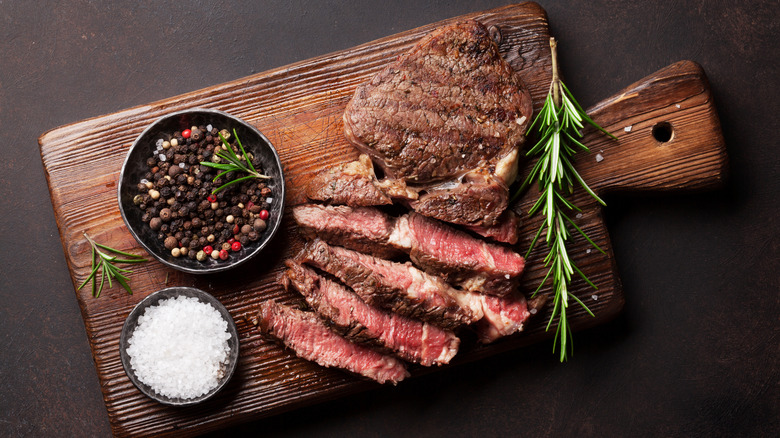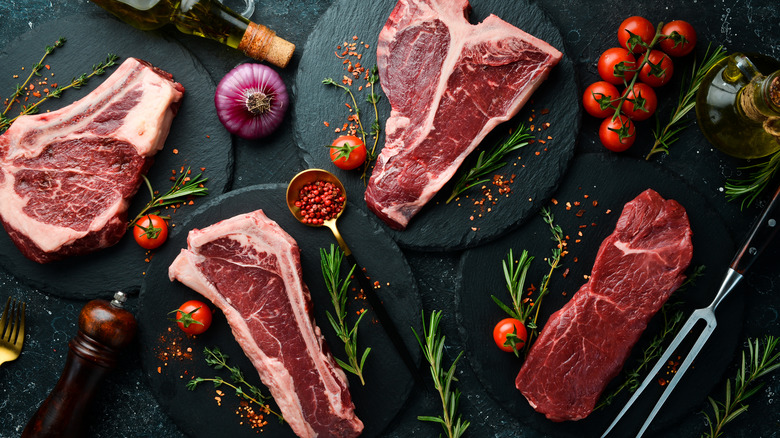Why You Shouldn't Cut Into Steak To Check For Doneness
There are few disappointments greater than an improperly-cooked steak – so it makes sense that when attempting this special-occasion dish, you'd want to cook it just right. Cutting into the center of a steak seems like an easy, foolproof way to see if it's reached your preferred level of doneness. But according to Serious Eats' J. Kenji Lopez-Alt, this method can have a negative effect on your final dish — and not for the reason you might think.
Per Serious Eats, many assume that cutting into your steak to check for doneness will cause the meat's juices to run out, leaving you with a dry, flavorless dish. But it turns out that's not actually a huge problem. While cutting the meat does allow for some juices to escape, the loss of moisture is ultimately very minimal. Rather, there is a more significant issue with the slice-and-check method: It does not yield accurate results.
Why cutting your steak to check for doneness isn't an accurate method
According to Serious Eats, cutting into your steak while it's still sizzling in the pan will yield inaccurate results. This is because the juices that emerge from the hot steak will make it look much rarer than it actually is. If you continue to cook the steak based on the appearance of its interior, you will likely end up with an overcooked piece of meat.
Luckily, there are other, more reliable ways to ensure that your steak is cooked perfectly. A meat thermometer is the most foolproof method for checking doneness, reported The Spruce Eats. Just keep in mind that the thermometer should be inserted into the thickest part of the steak for an accurate reading. Because the meat will continue to cook after it's removed from the heat, you should also pull your steak when it's about five degrees Fahrenheit away from the desired temperature. The site reported that 130 to 135 degrees Fahrenheit will get you a medium-rare steak, while 140 to 150 degrees Fahrenheit translates to medium doneness.

